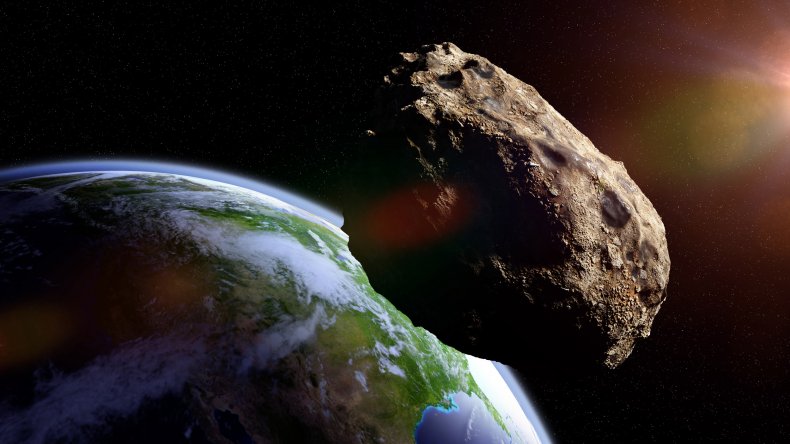BY ARISTOS GEORGIOU
An enormous asteroid is set to sail safely past the Earth this weekend.
The space rock, known as 2015 NU13, is estimated to measure between 1,017 and 2,230 feet in diameter, data from NASA's Center for Near Earth Studies (CNEOS) shows.
At the upper end of this estimate, the asteroid would be almost twice as big as the Empire State Building in New York City.
It would also stand slightly short of the world's tallest building—the Burj Khalifa in Dubai, which is about 2,723 feet.
2015 NU13 is set to make its closest approach to Earth at 4:16 a.m. ET on January 9, when it will come within 3.5 million miles of Earth.
This is equivalent to about 15 times the average distance between the Earth and the moon, which is relatively close in astronomical terms.
In any case, astronomers know the trajectory of this object well and there is no chance that it will strike the Earth during this approach.
As the space rock flies past our planet it will be travelling at approximately 33,700 miles per hour, which is about 45 times as fast at the speed of sound.
2015 NU13 is among the top 100 largest space rocks that are set to make a close approach to Earth within the next 365 days, according to the CNEOS.
The largest object scheduled to make a close approach over this period is a space rock known as 231937 (2001 FO32) that is estimated to measure up to 1.05 miles in diameter.
This object will make its close approach to Earth on March 21, coming within about 1.25 million miles of our planet.
Both 2015 NU13 and 2001 FO32 are classified as "near-Earth objects", or NEOs, given that they can pass within about 30 million miles of Earth's orbit.
Some NEOs are also designated "potentially hazardous" if they are estimated to measure more than 460 feet in diameter and have trajectories that will bring them within 4.7 million miles of Earth's orbit.
Scientists have currently identified around 25,000 NEOs, the vast majority of which are asteroids. According to NASA, no known asteroid poses a significant risk of colliding with the Earth over the next century.
"By continually searching for asteroids, we expect to eventually find the majority of the hundred-meter-scale asteroids over time, as each happens to pass by our planet many years or decades before a possible potential impact," CNEOS director Paul Chodas previously told Newsweek.
"We have already inventoried over 95 percent of the really large asteroids (1 kilometer or 0.62 miles in size and larger) and we know that none of them has any chance of impacting over the next century."
 Stock image: Artist's illustration of an asteroid making a close approach to Earth.ISTOCK
Stock image: Artist's illustration of an asteroid making a close approach to Earth.ISTOCK
No comments:
Post a Comment